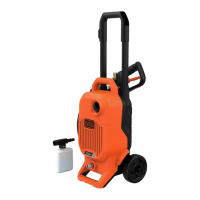
Do you have a question about the Black & Decker BEPW1850 and is the answer not in the manual?
| Power Source | Electric |
|---|---|
| Max Pressure | 1850 PSI |
| Flow Rate | 1.2 GPM |
| Hose Length | 20 ft |
| Weight | 24.3 lbs |
| Water Flow | 1.2 GPM |
Emphasizes the importance of reading the entire manual before assembly, operation, or installation.
Covers key precautions like supervision, staying alert, clear area, proper footing, and GFCI usage.
Warns about chemical exposure (California Prop 65) and safe handling of cleaners.
Details safety regarding plugs, cords, GFCI protection, and voltage.
Precautions for handling high-pressure hoses, avoiding injection risks, and using nozzles safely.
Guidelines for selecting and using appropriate extension cords for safe operation.
Instructions on how to connect the spray wand to the spray handle securely.
Steps for connecting the high pressure hose to the spray handle and pressure washer unit.
Guidance on connecting the garden hose to the pressure washer's water intake.
Procedure for securely attaching different spray nozzles to the spray wand.
Instructions for attaching the soap bottle to the spray handle.
Demonstrates the correct grip and hand placement for operating the pressure washer safely.
Procedure to test the GFCI plug before each use to ensure electrical safety.
Steps to prepare the cleaning area, including removing hazards and protecting surroundings.
Ensuring the unit is ready for operation by connecting water supply and high-pressure hose.
Guides on starting the washer, optimal spraying angle, and detergent application.
Safe methods for moving the unit, including turning it off and releasing pressure.
Procedure for safely turning off the unit, water supply, and unplugging the power cord.
Instructions for cleaning the unit, including air vents and using appropriate cleaning agents.
Steps to clean a clogged nozzle using the provided cleaning tool.
Guidelines for storing the pressure washer indoors, above freezing, and draining components.
Identifies causes like unit not plugged in or switch off, and suggests solutions.
Troubleshoots issues like clogged filters, worn nozzles, or air in the pump.
Addresses problems with water supply restriction or air in the pump system.
Solutions for leaks at the garden hose connection, often due to loose fittings.
Diagnoses leaks from the spray wand, possibly due to O-ring issues.
Identifies causes for pump noise, such as air in the pump or loose fittings.
Troubleshooting for pump leaks, potentially due to worn water seals.
Addresses oil leaks, likely caused by worn oil seals in the pump.
Potential causes include low supply voltage or residual pressure.
Troubleshooting steps for issues with detergent flow, such as empty containers or blockages.

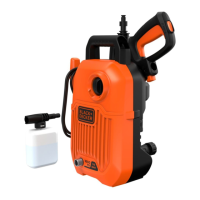

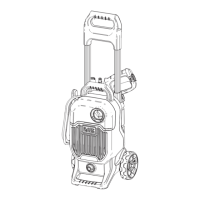

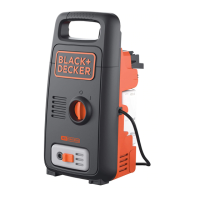
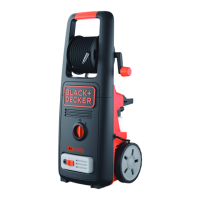
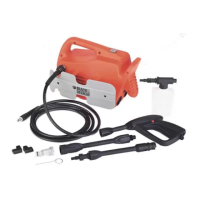




